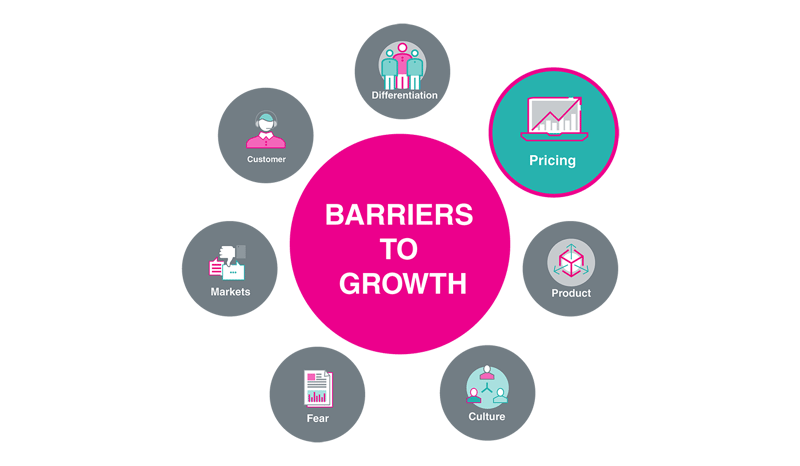Marketing is often perceived by outsiders as being a creative industry, and, indeed, much of it is.
Marketers are often caricatured as quirky creatives or flashy account managers – not skilled data analysts.
But the most important thing in marketing is data: customer contact details, website analytics, email click throughs and everything in between. Get data management, analysis or reporting wrong and everything else that follows is potentially wrong, too.Many businesses don’t use or manage data correctly, costing them dearly in wasted marketing spend. And, with GDPR (the General Data Protection Regulation) , these companies will now be forced to look at data from a compliance point of view.
So, whether it’s for profit or to avoid a penalty, a strong understanding of data is a must for all B2B businesses.
What data do you have?
You’re likely aware that your business is sitting on a lot of data. For many business owners, the challenge is understanding the value of that data, and then knowing what to do with it. Whether it’s 500 contacts or 500,000, the best place to start is with an audit of the data you already hold.
"Good" customer data is complete, i.e. without bits missing. If you haven’t got, as a bare minimum, name, company name, personal email address (not info@xxxx or sales@xxxx) and phone number, it’s not complete. If you’ve got data that’s over a year old, the chances are that it’s getting out of date. By two years – it’s definitely out of date.
If there are numerous gaps, missing information and duplicate details then you must invest in cleaning it up, and storing and managing it properly. Once cleaned, we would recommend drawing up a best-practice guide for data collection and entry for everyone in the business.
What does data look like?
Data can be split into two broad areas: internal data about customers you already have, and external data about customers you would like to have.
Internal data is a known, but external data is often an approximation – a best guess, if you like. Suppose you’re advertising a product. Where would you promote it to reach the sort of people you think would typically buy it?
Certainly, you might decide on channels to use – like social media or direct mail, outdoor advertising or radio, for example – but beyond that you have choices. Which radio station? What type of social demographics? Which data list for direct mail and what neighborhood and passing traffic for your outdoor campaign? Your internal data will give you some good clues.
Segmentation
Segmentation is a huge topic but it’s right and relevant to provide an overview here.
Whether your data is housed on a few spreadsheets or a CRM database, make sure you split your customers and your prospects at the very least; the messaging and marketing to each will be very different.
More than that simple split, you can also segment by product or service: Who buys what? How often? How long does a sale take? What are the top five lead sources? What is your most profitable service or product? Could it be cross-sold to people who don’t already buy it? Cross-reference your internal and external data and look for patterns that might indicate buying trends or signals.
Customer profiling
Aside from the marketing and sales benefits of a clean, segmented customer list, you also should use your data to profile your customers.
What do they have in common, where are they and what do they like and dislike about you and your competitors? After all, the best way to identify potential customers is to analyse your existing ones. Get that bit right and the chance of your marketing communications (the creative stuff – ads, mailers, social media – whatever channels you are using) working better will be much higher.
Use the data to generate the right information and you will be talking to people who should be interested in what you have to offer – based on their needs, demographics, or circumstances. People like to buy rather than be sold to. So, by careful management of data, your campaigns should be received by more receptive people, who are therefore more likely to engage with you. You will also reduce “wastage” costs associated with targeting people who do not match your typical customer profile.
Accurate targeting also means that topline customer stats – cost per acquisition, cost per lead, conversion rates and so on – will paint a far more accurate picture of their market and inform future decisions even more effectively.
Analytics
We live in an age where digital traffic can be easily monitored. Using Google Analytics and Webmaster Tools, we know how many people visit our website, what pages they view and for how long. Internal data like this must be factored into decisions regarding external data. Think of it as fact-based marketing: If you base your decisions more on what you know than what you assume, your chances of marketing success will be much higher.
GDPR is coming – what you need to know
The General Data Protection Regulation comes into effect in May 2018 and will dictate how your data should be stored and managed. Email marketing will have a mandatory opt-in not opt-out rule, meaning that anyone you email must have given you specific permission to send. It’s the same with SMS, too. But postal and telephone will be opt-out.
While GDPR shouldn’t be the trigger for upping the ante on your data management, for many companies it has been. Having ignored the potential of great data management in the past, some businesses are now begrudgingly adopting strategies to comply with the new legislation. What many of them don’t realise is that they will very likely profit from it in the long-term as well through higher quality and better protected data on both clients and prospects. The richer your data pool, the greater the opportunity. Customer data is a competitive asset in any business.
Big data – big opportunity
The proliferation of data in our society holds profound opportunities for businesses. Good data analysis and management means better targeting, compliance with the new regulations and less wasted spend targeting the wrong customers. And who is going to argue with that?
Many of our proven part-time Marketing Directors are helping companies get to grips with data for both profit and compliance.



